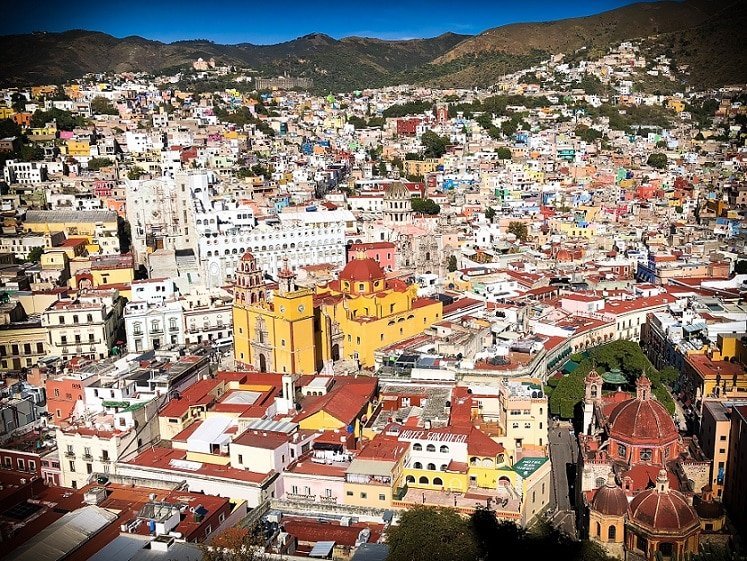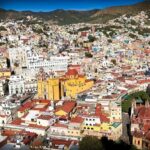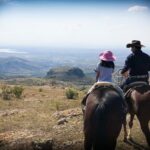Why You Absolutely MUST See The Mummies in Mexico
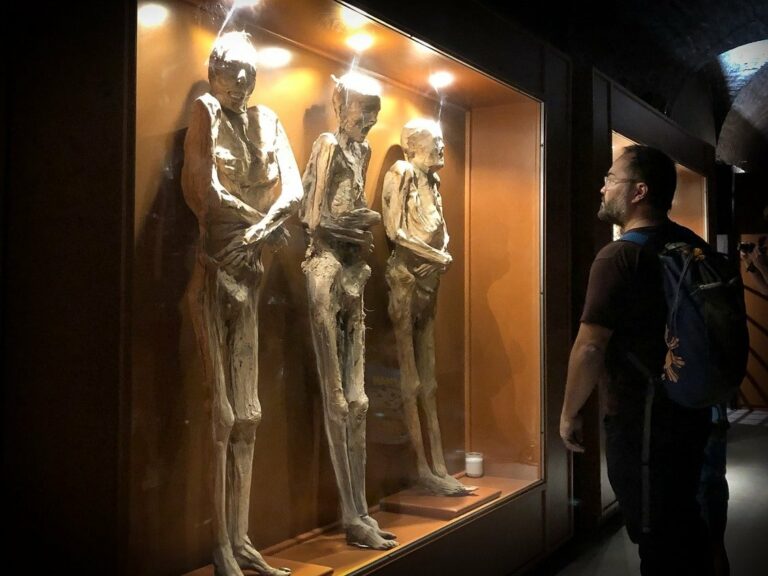
When you think of mummies, Mexico is probably the last place that comes to mind. For most people, we associate mummies with Egypt. But surprisingly, there are mummies in Mexico! And the best place to find these mummies is in the central Mexican town of Guanajuato. In fact, there is a whole museum dedicated to these mummies of Guanajuato.
There are so many cultural and adventure attractions in Guanajuato to explore. But the Museo de las Momias, which is located on the western side of the city, is the most unique and unusual attraction. It sits on top of a hill, adjacent to a cemetery called the Panteon Santa Paula. Here in this small museum, around 59 human bodies from the 1800's are on display, perfectly mummified in their glass cases.
Warning: if you are in any way uneasy about death or dead bodies, then don't read any further. While I find these kinds of things fascinating, I understand that not everybody does. Consider yourself warned.
This post was updated on May 19, 2020.
This post may contain affiliate links. That means I may receive a small commission if you click on the link and purchase something. But don't worry, this will not result in any extra costs to you.
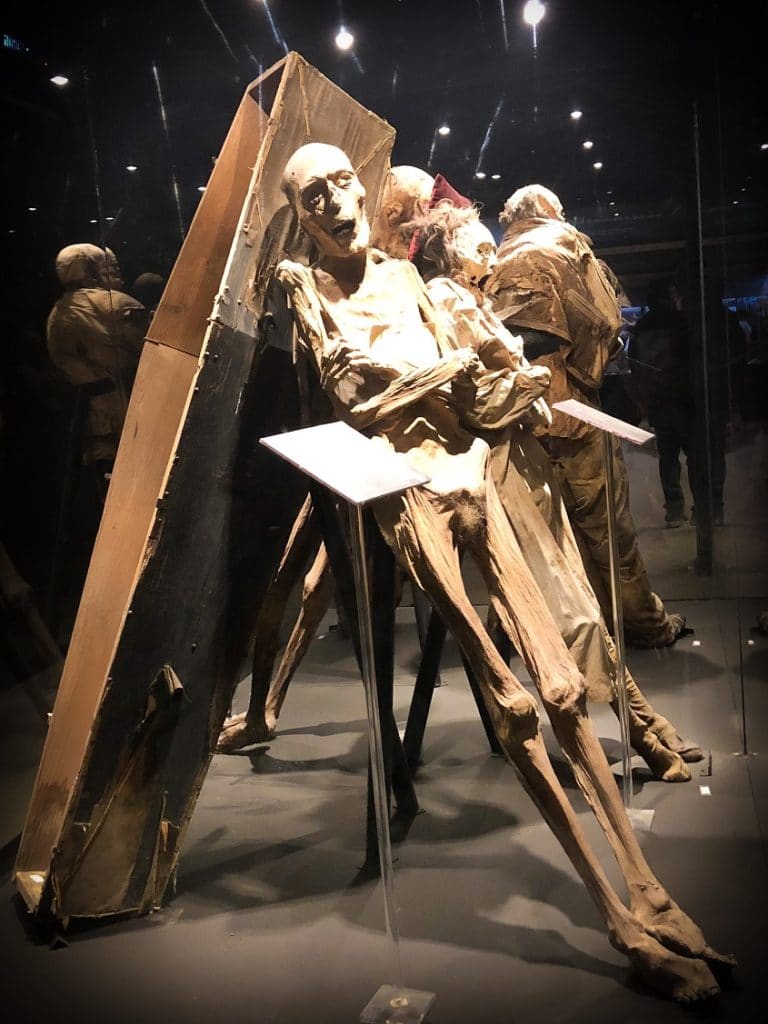
The history of the Guanajuato mummies in Mexico
The story behind the mummies of Guanajuato is both strange and sad. These mummies of Guanajuato were bodies of the deceased, exhumed from the Panteon Santa Paula beginning in the 1800's until the 1970's.
Yet in researching the history of these mummies in Mexico, I found some discrepancy as to why the bodies were exhumed (removed from their crypts) in the first place.
Varying explanations for the mummies in Mexico
One explanation I found was that these mummies were part of the dead that resulted from the cholera outbreak that swept through Asia, Europe, and Latin America in the mid-1800's. In order to make more room for the newly deceased in the Panteon Santa Paula, bodies had to be exhumed.
In another explanation, the reason for exhuming the bodies was because the relatives of the deceased failed to pay grave taxes to the cemetery. The mummies that reside in Museo de las Momias, and that are part of the museum's larger collection, are the bodies of the deceased who never had relatives come to claim them and pay the necessary taxes for their graves.
A rare glimpse into the past
Regardless of which explanation you go with, because of the dry and air-tight conditions of the crypts, these bodies were perfectly mummified when they were exhumed. For a long time, the cemetery kept these mummies in an underground storage area.
Over time, the workers began charging admission for people to come see these mummies of Guanajuato. Eventually, the Museo de las Momias was created, to properly store and display the mummies in a more respectful manner. What's fascinating about these mummies is that you can see the clothes that these people were wearing, offering a rare look at life in the past. For a worldschooling family like us, the museum offers a unique historical lesson for our kids.
Looking to explore other things to do in Guanajuato state? Read my posts here.
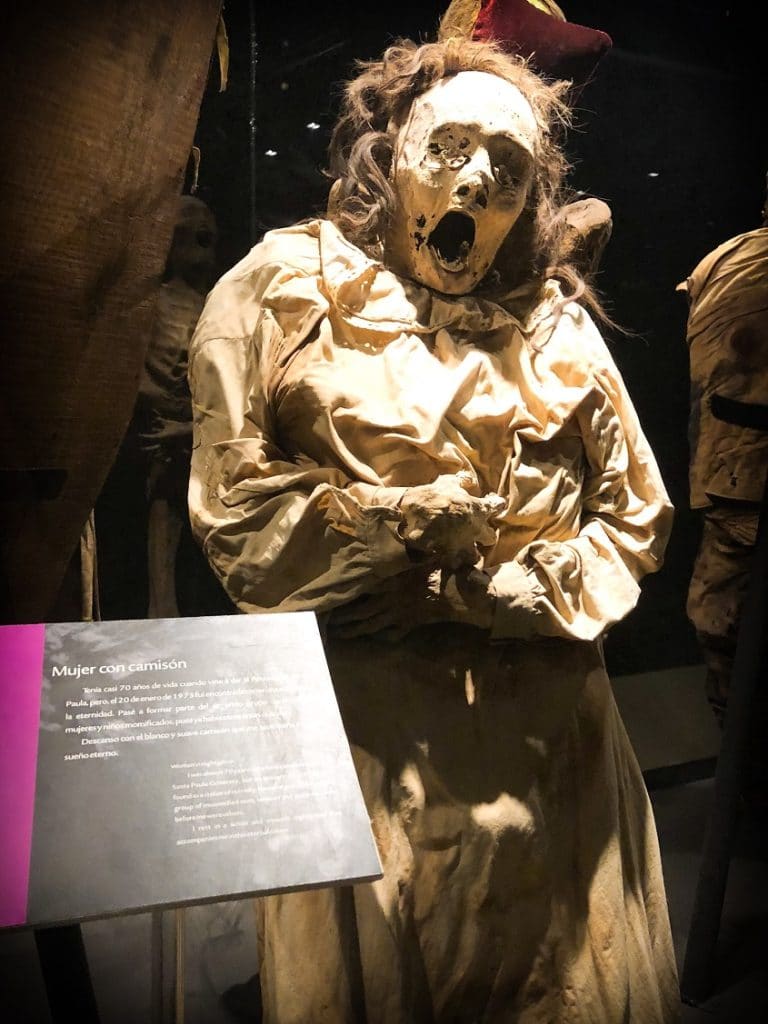
Visiting the Museo de las Momias
Oddly enough, the Museo de las Momias is one of Guanajuato City's most well-known tourist attraction. People throughout Mexico know about the mummies of Guanajuato. There's even a classic Mexican horror film about the mummies!
Author, Ray Bradbury, once visited the Museo de las Momias and wrote a short story based on it, which can be found in the book, Mummies of Guanajuato.
Getting to the mummies in Mexico
The Museo de las Momias is easy to get to by car, bus, or even walking. Any taxi driver in the city knows where the Museo de las Momias is located. You can also use an Uber to get to the museum.
And many of the public buses that pass through Centro, Guanajuato's historic town center, go in the direction of the museum. If you choose to walk to the museum, it is about a thirty minute walk from Centro.
Admission and hours for the museum
Admission to the Museo de las Momias is 85 pesos for adults, and 50 pesos for children over three and a half feet tall. Cameras (including phone cameras) cost an additional 30 pesos. The museum is open Mondays through Thursdays from 9am to 6pm. On Fridays, Saturdays, and Sundays, the museum is open from 9am to 6:30pm.
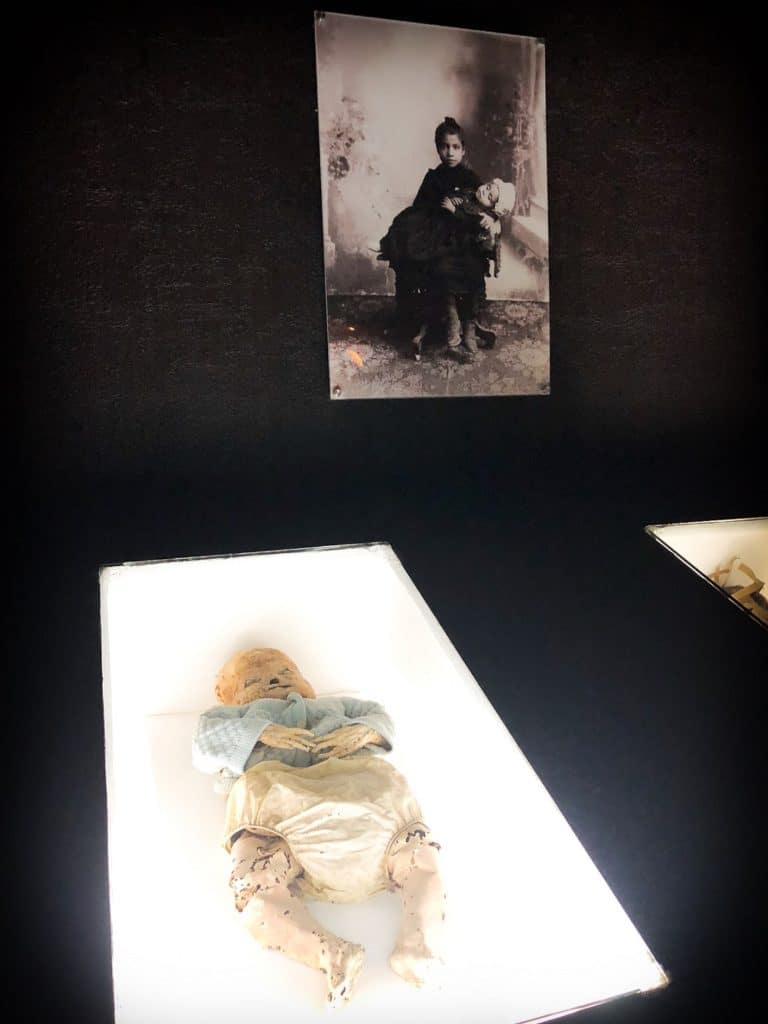
Our family's experience with the mummies in Mexico
We hesitated at first to bring our kids to the mummy museum. Would it be too scary? Too creepy? How would the kids handle seeing dead bodies? But surprisingly, the kids were just as fascinated by the mummies of Guanajuato as we were. It was certainly one of the more exciting things to do in Guanajuato.
The mummies at the Museo de las Momias are all displayed in sealed glass cases that are temperature controlled. It is a bit unnerving, at first, to see them displayed like this. In their cases, they look like specimens. They look like objects. You forget that they are humans. These mummies were people who, at one point, had their own lives and their own stories. Now they are just exhibits in a museum. Thinking about this, even now, makes me sad.
But from a historical and educational perspective, the Museo de las Momias is an interesting place to visit. Here, you can really see what happens to our bodies when we die. In the exhibits, you see people in the clothes they were wearing when they were buried. You see body parts that you think wouldn't be preserved, like beards, or teeth, or even eyeballs. You can even see the smallest mummy in the world, a six month old fetus.
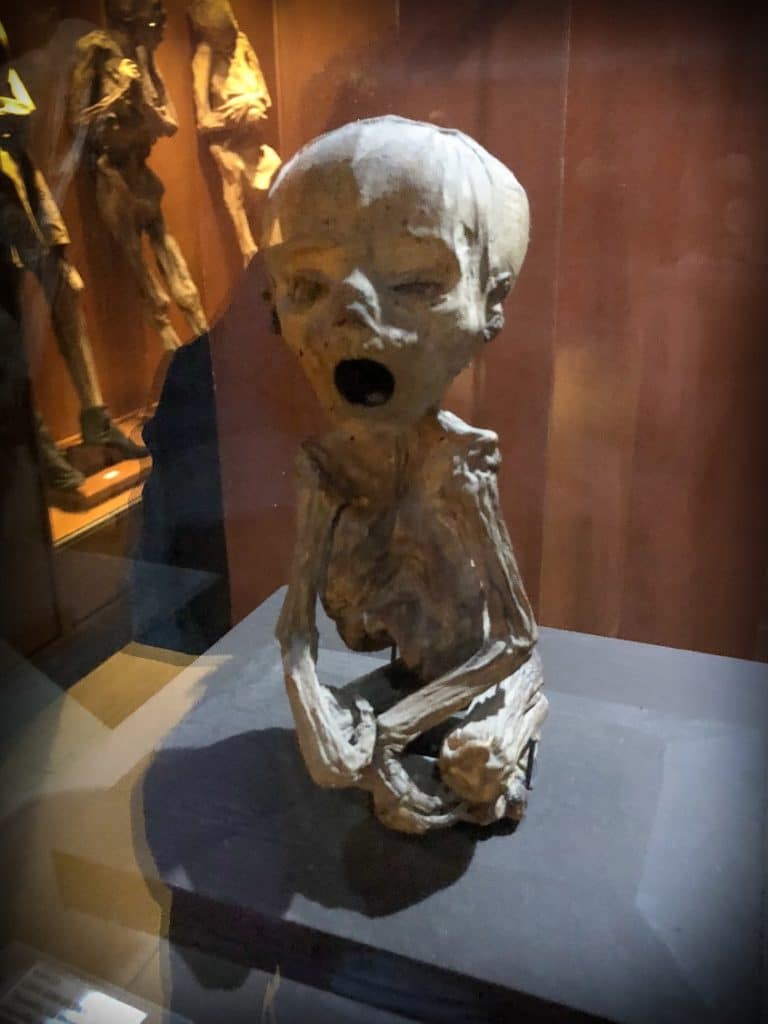
Things to note when visiting the museum
If you're planning to visit the Museo de las Momias, there are a few considerations to keep in mind in order to be a respectful and responsible traveler. First, these are historical artifacts, so be sure to treat them with respect. Don't try to touch the mummies, and be respectful of barriers that are placed in the exhibit.
Second, remember that these mummies were actual human beings. Therefore, they need to be treated with respect. Taking pictures is fine, but do so in a respectful way. Making silly faces or poses is not okay. And neither is using profane gestures.
Finally, understand that Mexicans have a different view towards death than other cultures. Their ceremonies and traditions surrounding death stem from pre-Columbian Aztec cultures, and are intermixed with the Catholic beliefs imposed on them by the Spanish conquerors. Displaying mummies is a way of remembering history, and honoring the lives of the deceased.
Take a read through some of these books with your kids to learn about the significance of death within Mexican culture:
Citlali y el Dia de Muertos (Citlali and the Day of the Dead)
Chicano Jr's Day of the Dead Adventure
Funny Bones: Posada and His Day of the Dead Calaveras
I Remember Abuelito: A Day of the Dead Story
If you're interested in learning more about places families can visit in Mexico, read my posts here.
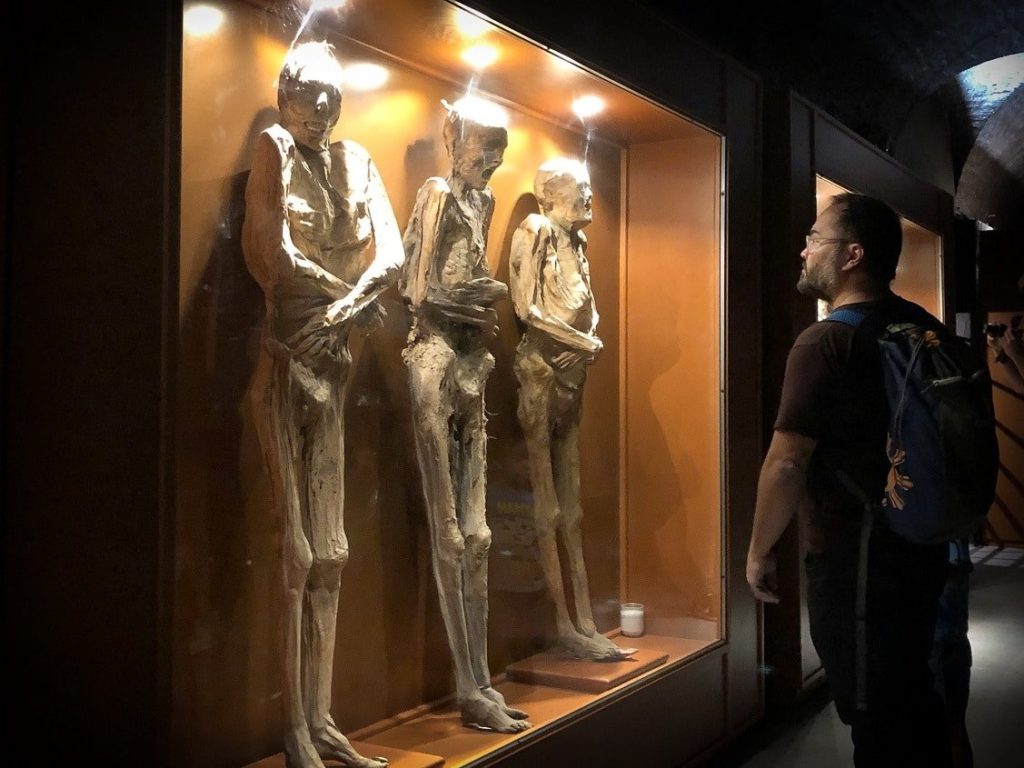
Making time to see mummies in Mexico
A visit to the Museo de las Momias is not for the faint of heart! There are things in that museum that may be disturbing for young children to see. So take time to consider whether seeing mummies in Mexico would be appropriate for your family.
However, if your kids are mature enough to see this kind of thing, then you should definitely make time to see the mummies of Guanajuato. Travel often pushes us to step out of our comfort zones, and a visit to the Museo de las Momias certainly fits that bill.
Have you visited the Museo de las Momias? Share your experience of seeing mummies in Mexico in the comments.
Visiting Guanajuato as part of a bigger family travel adventure? Use my ebook, Hey Kids, Let’s Go Travel! as a resource for tools, advice, and action steps for planning your trip.
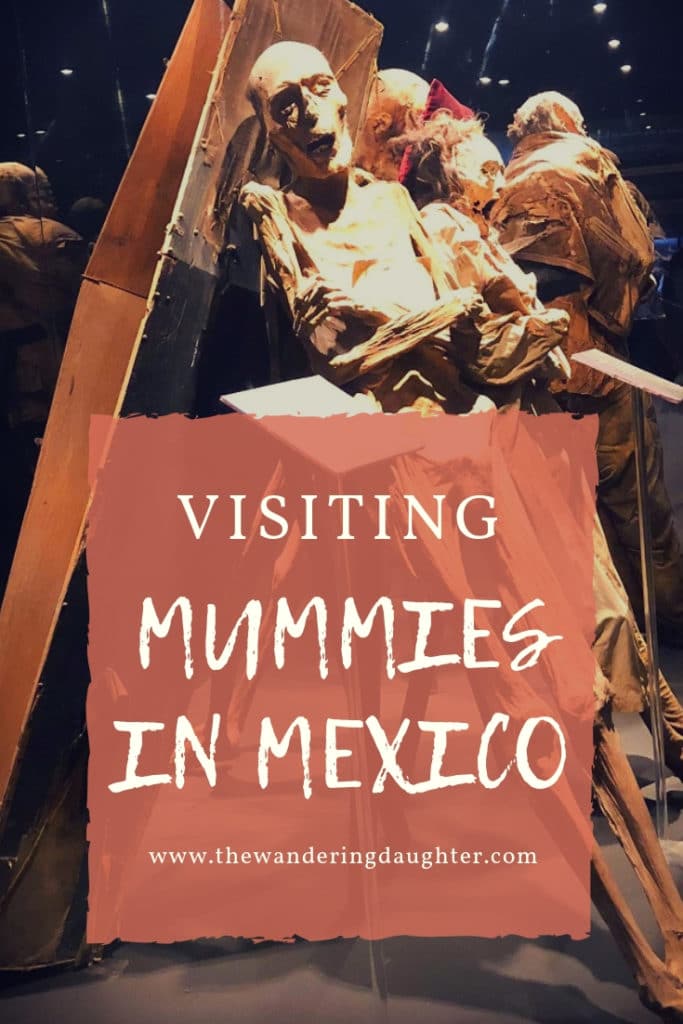
Need help thinking through how to budget for a family trip? My Travel Budget Worksheet is just the tool you need! Click here to receive your free copy by signing up for my newsletter.
Want to connect with me on social media? Find me on Facebook, Instagram, Pinterest, and Twitter. And for those of you who are dedicated to traveling more responsibly, sustainably, and ethically, join over 200 like-minded families on my Facebook group, Responsible Family Travel.



